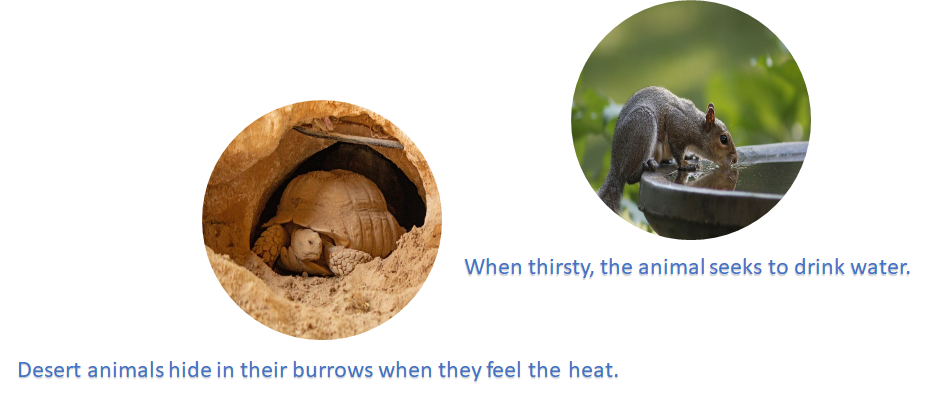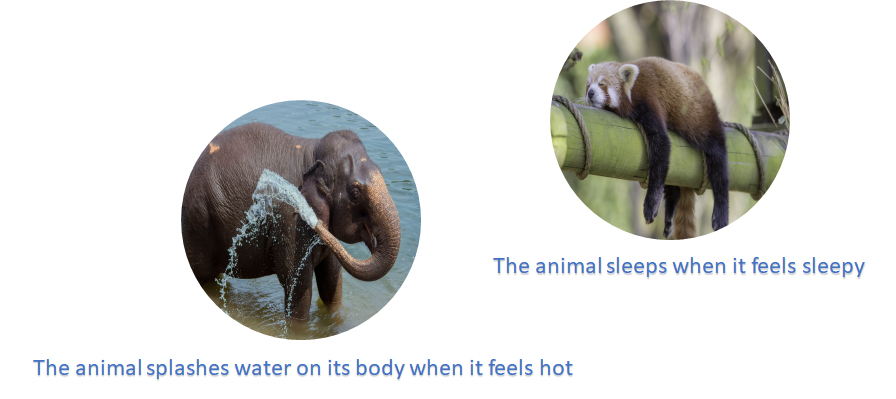 |
Behaviour of living things
What is behaviour?
Behaviour: is the actions and movements that living things perform in response to different conditions that affect them.
The importance of behaviour for living things
Behaviour helps living things live in the environment.
Stimuli
The Behaviour occurs in a living thing when it is exposed to a stimulus.
Stimuli: the different conditions that a living thing responds to by performing a specific behavior.
Examples:
- When an animal is thirsty, it goes to drink water.
Thirst is called stimuli, and drinking water is called behaviour.
- When desert animals feel the heat, they hide in their burrows.
The feeling of heat is called stimuli, and hiding in burrows is called behaviour.

Types of stimuli
 Internal stimuli:
Internal stimuli:
conditions that occur inside a living thing's body.
Example:
A living thing sleeps (behavior) when it feels sleepy (internal stimuli).
 External stimuli:
External stimuli:
conditions that surround the living thing.
Example:
The animal splashes water on its body (behaviour) when it feels hot (external stimuli).

Types of behaviour
 Innate behaviour:
Innate behaviour:
It is the behaviour that is born with the living thing and does not require training.
Examples:
- The feeding of some animals' young by their mothers.
- The mother's care for her young.
- The spider builds a web to catch insects.
- The migration of birds to warmer regions in cold times.

 Learned behaviour:
Learned behaviour:
It is the behaviour that humans or animals acquire through training.
Examples:
- Humans learn to read and write.
- The child learns to ride a bicycle.
- The bird trains its young to fly.
- The dolphin is trained to play with the ball.

Living things behave in different ways when caring for their young, such as:
- Providing food.
- Helping to walk.
- Protection from danger.